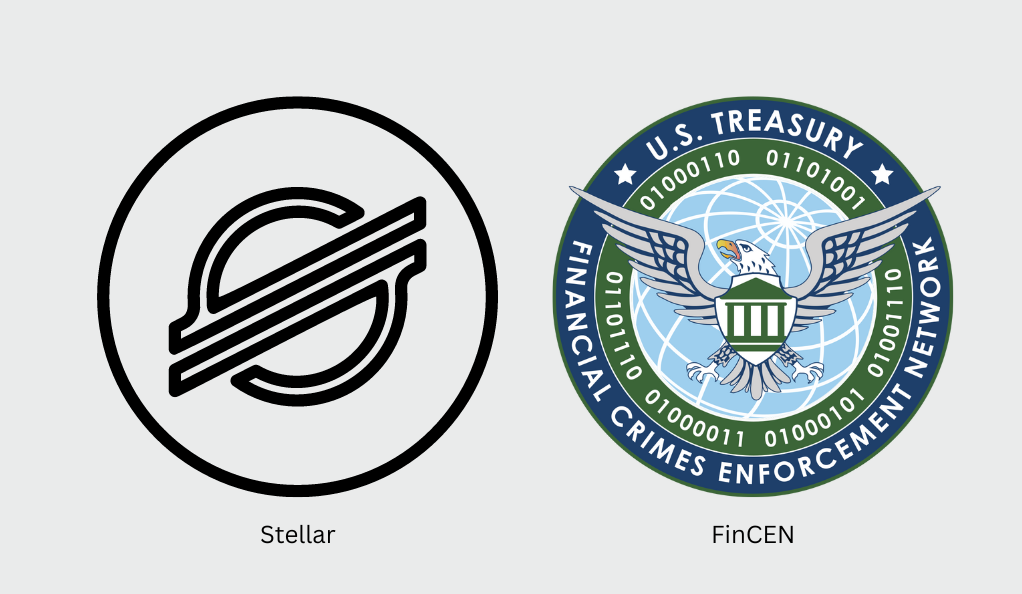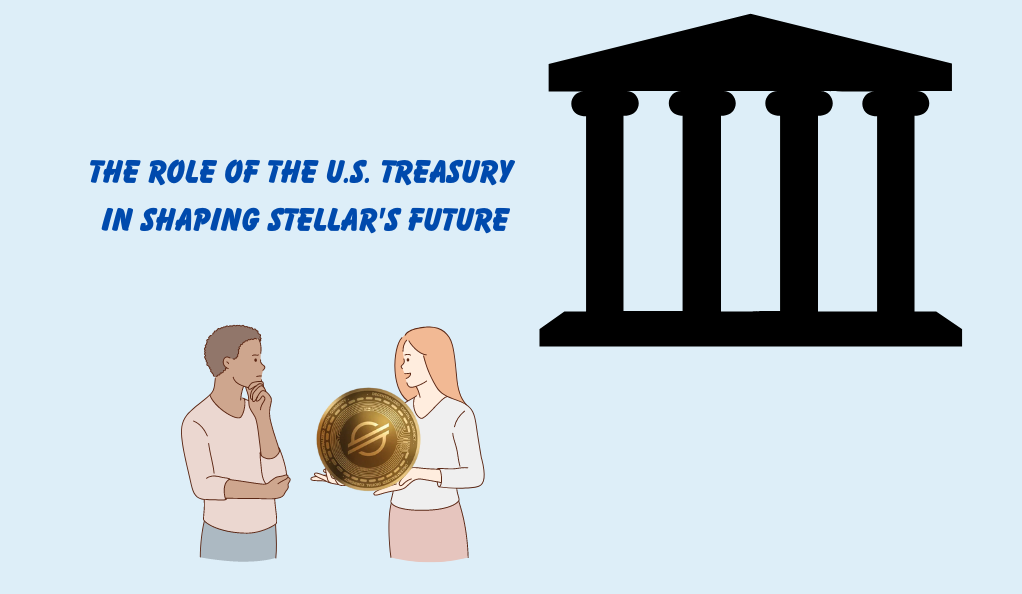Stellar Lumens, often referred to by its ticker symbol XLM, has emerged as one of the most promising cryptocurrencies in the vast digital currency landscape. As with any cryptocurrency, understanding its intricacies goes beyond just its technological framework; it requires a grasp of the broader ecosystem, including the regulatory environment in which it operates. This section aims to provide a foundational understanding of Stellar Lumens and highlight the importance of regulations in shaping its trajectory.
What is Stellar Lumens (XLM)?

Stellar Lumens is the native cryptocurrency of the Stellar network, a decentralized and open-source platform designed to facilitate cross-border transactions. Unlike many other cryptocurrencies that focus primarily on peer-to-peer transactions, Stellar aims to bridge the gap between financial institutions and the unbanked, making money transfers more accessible and affordable.
Why is the Regulatory Environment Important?
The world of cryptocurrencies is still relatively young, and as it continues to mature, it inevitably intersects with the traditional financial system. This intersection brings about the need for regulations to ensure consumer protection, prevent illegal activities, and maintain financial stability. For investors and stakeholders in the Stellar Lumens ecosystem, understanding these regulations is crucial. They can significantly impact the Stellar Lumens price prediction, its adoption rate, and its overall future in the financial landscape.
The Interplay Between Stellar Lumens and Regulations
Cryptocurrencies, by their very nature, challenge traditional financial norms. They operate on decentralized networks, often bypassing intermediaries like banks. While this offers numerous advantages, it also presents challenges for regulators who are tasked with ensuring financial stability and integrity. Stellar Lumens, with its focus on bridging traditional and digital finance, often finds itself at the forefront of these regulatory discussions.
In the subsequent sections, we will delve deeper into specific regulatory challenges and events that have shaped Stellar Lumens’ journey. From global regulatory landscapes to specific proposals that have stirred discussions within the Stellar community, we aim to provide a comprehensive view of how regulations influence the trajectory of Stellar Lumens and, by extension, its price predictions.
The Global Regulatory Landscape for Cryptocurrencies
The global regulatory landscape for cryptocurrencies is as diverse as the countries that constitute our world. Each nation, with its unique economic, political, and cultural backdrop, approaches cryptocurrency regulation differently. This section provides an overview of how various countries address cryptocurrency regulation and the challenges and opportunities these regulations present.
A Mosaic of Regulatory Approaches
Cryptocurrencies, being a relatively new phenomenon, have prompted varied reactions from governments worldwide. Some nations have embraced them, seeing potential for innovation and economic growth, while others have been more cautious, citing concerns about security, financial stability, and illicit activities.
Challenges Presented by Diverse Regulations
- Lack of Uniformity: The varied approaches make it challenging for global crypto enterprises to operate seamlessly across borders. They have to navigate a patchwork of regulations, which can be resource-intensive.
- Innovation vs. Security: Striking the right balance between fostering innovation and ensuring security and consumer protection is a significant challenge. Over-regulation can stifle innovation, while lax rules can expose consumers to risks.
- Economic Implications: Countries that resist the crypto wave might miss out on potential economic benefits, from job creation to attracting tech talent and investments.
- Enforcement Difficulties: The decentralized nature of cryptocurrencies makes enforcement of regulations challenging. Tracking illicit activities or ensuring compliance requires advanced technological tools and expertise.
Opportunities Stemming from Regulations
- Market Legitimacy: Clear regulations can lend legitimacy to the crypto market, attracting institutional investors and fostering trust among retail investors.
- Consumer Protection: Well-thought-out regulations ensure that consumers are protected from fraudulent schemes, scams, and other risks inherent in the crypto world.
- Innovation Hubs: Countries with progressive regulations can become hubs for crypto innovation, attracting businesses, talent, and investments.
- Financial Inclusion: Cryptocurrencies, when regulated, can be a tool for financial inclusion, providing banking and financial services to those previously unbanked.
Stellar Lumens and the FinCEN Regulatory Proposal

The Financial Crimes Enforcement Network (FinCEN), a bureau of the U.S. Department of the Treasury, plays a pivotal role in shaping the regulatory landscape for cryptocurrencies in the United States. One of its proposals, particularly concerning unhosted wallets, has garnered significant attention from the crypto community, including Stellar Lumens. This section delves into Stellar’s response to this proposal and the potential implications for Stellar Lumens’ price prediction.
Understanding Unhosted Wallets
Before diving into the specifics of the proposal, it’s essential to understand what unhosted wallets are. Unlike hosted wallets provided by centralized exchanges, where the exchange controls the user’s private keys, unhosted wallets are self-custodied. This means users have full control over their private keys and, by extension, their funds. These wallets are often seen as a means to achieve greater privacy and autonomy in the crypto world.
The FinCEN Proposal: An Overview
FinCEN’s proposal aimed to impose stricter regulations on transactions involving unhosted wallets. Specifically, it required banks and money service businesses (MSBs) to verify the identity of customers involved in transactions over $3,000 to or from an unhosted wallet and report transactions over $10,000.
Stellar’s Criticism of the Proposal
Stellar Development Foundation (SDF) was vocal in its criticism of the FinCEN proposal. Their primary concerns included:
- Misunderstanding of Unhosted Wallets: Stellar argued that the proposal showcased a misconception of how unhosted wallets operate. They emphasized that these wallets are crucial for financial inclusion and privacy, especially in regions with unstable financial systems.
- Hasty Rulemaking: The SDF pointed out the unusually short 15-day comment period for such a significant proposal, suggesting that it didn’t allow for comprehensive industry feedback.
- Potential for Disintermediation: Stellar warned that the rule could push users away from regulated platforms, leading to a rise in entirely peer-to-peer transactions, which could be counterproductive to FinCEN’s goals.
Implications for Stellar Lumens Price Prediction
The regulatory environment, especially proposals like FinCEN’s, can have profound implications for cryptocurrencies, including Stellar Lumens. Here’s how:
- Market Uncertainty: Regulatory proposals can introduce uncertainty in the market. If implemented, traders and investors might be wary due to potential compliance challenges, impacting Stellar Lumens’ price prediction in the short term.
- Stifling Innovation: Overly restrictive regulations can hinder the growth and innovation of platforms like Stellar, especially when they target foundational aspects like unhosted wallets.
- Reputation and Perception: Stellar’s proactive stance against the proposal could be seen positively by the crypto community, appreciating its commitment to financial inclusion and privacy. This could influence investor sentiment and, by extension, price predictions.
EU vs. U.S. Regulatory Stance on XLM
The regulatory environment for cryptocurrencies varies significantly across the globe, with the European Union (EU) and the United States (U.S.) being two major players with distinct approaches. Stellar Lumens (XLM), as a prominent cryptocurrency, is inevitably influenced by these regulatory stances. This section delves into the regulatory clarity of XLM in both the EU and the U.S. and explores how these regulations might impact Stellar Lumens’ price predictions.
The European Union’s Approach to XLM
The EU, with its 27 member states, has been working towards creating a harmonized framework for cryptocurrencies, including XLM.
- Legal Classification: In the EU, cryptocurrencies like XLM are primarily viewed as digital representations of value. They are not considered legal currency or money, but they are recognized as being usable for investment purposes.
- Regulatory Framework: The EU introduced the Markets in Crypto-Assets (MiCA) regulation, aiming to provide clarity and consumer protection without stifling innovation. Under MiCA, crypto-asset service providers are required to be registered, ensuring transparency and accountability.
- Focus on Innovation: The EU has been relatively open to blockchain and crypto innovations, with several member states fostering crypto-friendly environments. This has led to a more predictable and stable regulatory environment for XLM in the EU.
The U.S. Perspective on XLM
The U.S., with its federal structure, has a more complex regulatory landscape for cryptocurrencies.
- Legal Classification: In the U.S., the classification of cryptocurrencies, including XLM, can vary based on the context. The Securities and Exchange Commission (SEC) might view certain crypto assets as securities, while the Commodity Futures Trading Commission (CFTC) classifies them as commodities.
- State vs. Federal Regulations: Individual states in the U.S. have their own regulations for cryptocurrencies. For instance, New York’s BitLicense is one of the most stringent regulatory frameworks, while other states have more lenient approaches.
- Regulatory Uncertainty: The U.S. has faced criticism for its lack of clear regulatory guidelines for cryptocurrencies. This uncertainty can impact businesses and investors looking to engage with assets like XLM.
Table 1: EU vs. U.S. Regulatory Overview
| Aspect | European Union | United States |
|---|---|---|
| Legal Classification | Digital representation of value | Varies (Securities or Commodities) |
| Regulatory Framework | MiCA | Varies by state and federal agency |
| Innovation Stance | Generally Positive | Mixed, with pockets of innovation |
Impact on XLM Crypto Price Prediction
- Regulatory Clarity: A clear regulatory environment, like that in the EU, can foster trust among investors, potentially leading to positive price predictions for XLM. On the other hand, uncertainty, as seen in parts of the U.S., can lead to market volatility.
- Market Access: A welcoming regulatory stance can attract more participants to the XLM market, increasing demand and potentially driving up prices.
- Innovation and Development: Regions with crypto-friendly regulations can become hubs for blockchain and crypto innovations, which can indirectly influence the adoption and price of XLM.
The Role of the U.S. Treasury in Shaping Stellar’s Future

The U.S. Treasury, as one of the most influential financial institutions in the United States, plays a pivotal role in shaping the country’s financial and economic policies. Its decisions and viewpoints on cryptocurrencies, including Stellar Lumens (XLM), can have profound implications for the crypto’s trajectory. This section delves into the U.S. Treasury’s influence on Stellar Lumens and explores how its regulatory decisions might impact the question: “Will Stellar Lumens go up?”
The U.S. Treasury and Cryptocurrencies: An Overview
The U.S. Treasury, through its various bureaus and offices, has been actively involved in the cryptocurrency space. The Financial Crimes Enforcement Network (FinCEN), a bureau of the Treasury, is particularly instrumental in regulating and overseeing cryptocurrency-related activities.
- Regulatory Mandate: FinCEN’s primary mandate is to combat money laundering, terrorist financing, and other financial crimes. Given the decentralized and often anonymous nature of cryptocurrencies, they have been under FinCEN’s radar.
- Guidance and Regulations: Over the years, FinCEN has issued multiple guidance documents and regulations related to cryptocurrencies. These documents provide clarity on how existing financial laws apply to emerging crypto activities.
Implications for Stellar Lumens
Stellar Lumens, with its focus on cross-border transactions and financial inclusion, intersects with several areas of interest for the U.S. Treasury.
- Regulatory Compliance: Stellar’s partnerships with financial institutions and its aim to bridge the traditional and crypto financial worlds mean it must be in compliance with U.S. Treasury regulations. Any changes or updates in these regulations can impact Stellar’s operations and partnerships.
- Potential Scrutiny: Given Stellar’s mission to provide financial services to the unbanked and underbanked, its activities might attract scrutiny from the U.S. Treasury, especially if they involve regions or entities under U.S. sanctions.
- Influence on Price: Regulatory clarity or uncertainty from the U.S. Treasury can influence investor sentiment. Positive regulations can boost confidence, potentially driving up XLM’s price, while restrictive or unclear regulations can introduce market volatility.
Will Stellar Lumens Go Up? The Regulatory Perspective
The question of whether Stellar Lumens’ price will go up is multifaceted, with regulatory decisions being a significant factor.
- Positive Regulations: If the U.S. Treasury introduces crypto-friendly regulations or provides clear guidelines that favor Stellar’s operations, it can lead to increased adoption and positive price predictions for XLM.
- Regulatory Uncertainty: Lack of clear guidelines or potential regulatory hurdles can introduce market uncertainty. This can lead to price volatility as investors and stakeholders try to navigate the uncertain landscape.
- Global Influence: The U.S. Treasury’s decisions often have global ramifications. Positive or negative regulatory decisions can influence other countries’ stances on Stellar, further impacting its global adoption and price.
Stellar Lumens’ Position in a Regulated Crypto Market
As the crypto market matures, the inevitability of increased regulation becomes apparent. While some cryptocurrencies might find it challenging to navigate this evolving landscape, Stellar Lumens (XLM) is uniquely positioned to thrive. This section delves into Stellar’s distinct network setup, its potential advantages in a regulated environment, and how regulatory acceptance might influence XLM’s future price.
Stellar’s Unique Network Setup
Stellar Lumens operates on the Stellar network, a decentralized and open-source platform designed with a specific focus on cross-border transactions and financial inclusion.
- Consensus Mechanism: Unlike many cryptocurrencies that use proof-of-work or proof-of-stake, Stellar employs the Stellar Consensus Protocol (SCP). This mechanism ensures decentralized control, low latency, flexible trust, and asymptotic security.
- Focus on Financial Inclusion: Stellar’s primary mission is to expand financial access to those left out of the traditional banking system. It aims to make monetary transactions cheaper, quicker, and more reliable.
- Partnerships with Traditional Financial Institutions: Stellar has forged partnerships with various banks and financial entities, allowing it to bridge the gap between traditional finance and the crypto world.
Advantages in a Regulated Environment
Stellar’s design and mission offer several advantages in a world moving towards more crypto regulation:
- Compliance-Friendly Design: Stellar’s network facilitates compliance with regulatory requirements. Its built-in features like multi-signature and smart contracts can be tailored to meet specific regulatory standards.
- Transparency and Accountability: Stellar’s public ledger ensures transparency, a feature that regulators appreciate. Every transaction is recorded, making it easier to track and audit.
- Scalability: Stellar’s consensus mechanism ensures that the network remains scalable, even as more regulatory checks and balances are introduced.
- Interoperability: Stellar’s ability to bridge various financial systems, both traditional and digital, means it can adapt to diverse regulatory environments and requirements.
Influence of Regulatory Acceptance on XLM’s Future Price
- Boost in Investor Confidence: Regulatory clarity and acceptance can enhance investor confidence in XLM. When investors perceive that a crypto asset is less risky due to regulatory support, they are more likely to invest, potentially driving up the price.
- Wider Adoption: Regulatory acceptance can pave the way for more financial institutions to adopt Stellar for their operations, increasing the demand for XLM.
- Global Market Access: Positive regulations in major markets can influence other countries to adopt similar stances, opening up more global avenues for Stellar’s growth.
- Stability in Volatile Times: In periods of market volatility, cryptocurrencies with regulatory backing might be viewed as safer bets, potentially stabilizing or even increasing XLM’s price.
Conclusion
The cryptocurrency landscape is in a constant state of flux, shaped by technological advancements, market dynamics, and significantly, regulatory environments. Stellar Lumens (XLM) stands out in this vast digital realm, not just because of its technological prowess but also due to its vision of financial inclusivity and its adaptability to regulatory shifts. From understanding the global regulatory perspectives in the EU and the U.S. to examining the influence of pivotal institutions like the U.S. Treasury, it’s evident that Stellar’s journey is intertwined with regulatory developments. Its unique network setup, coupled with its mission-driven approach, positions Stellar Lumens favorably in a market that’s inching towards more stringent regulations. As the crypto world braces for more structured oversight, assets like Stellar Lumens, which bridge the traditional and digital financial divide, are poised to not only navigate but also thrive in this new era. For investors, stakeholders, and crypto enthusiasts, the trajectory of Stellar Lumens serves as a testament to the potential of cryptocurrencies to revolutionize finance, even within regulatory frameworks.
At bitvestment.software, our commitment is to deliver unbiased and reliable information on subjects like cryptocurrency, finance, trading, and stocks. It's crucial to understand that we are not equipped to offer financial advice, and we actively encourage users to conduct their own comprehensive research.
Read More